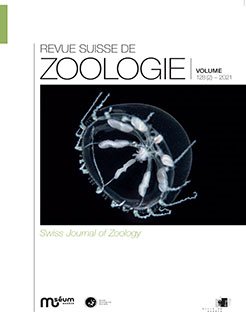Hydromedusae were photographed and collected during 75 night-time dives in the Gulfstream off Florida. Most of the collected material was used to obtain DNA extracts and subsequently to determine part of the mitochondrial 16S rRNA gene, a barcode marker preferentially used for hydrozoans. The morphological data and the 16S barcodes permitted us to identify 46 species and 6 additional species nameable only to the genus level. Photos and descriptions are provided for all of them and the taxonomy and species status discussed. Six new species are described: Pandeopsis prolifera n. spec., Zanclea mayeri n. spec., Corymorpha floridana n. spec., Staurodiscus luteus n. spec., Octophialucium irregularis n. spec., Solmaris flavofinis n. spec. The new family Wuvulidae is proposed for the genus Wuvula Bouillon, Seghers & Boero, 1988. The new name Aequorea neocyanea is introduced for Zygodactyla cyanea L. to avoid a secondary homonymy with Aequorea cyanea . Zygodactyla cyanea was considered to be a synonym of Aequorea forskalea for most of the 20th century, but we present arguments that it should be kept distinct from the latter and it must be transferred to the genus Aequorea. The genus Otoporpa is regarded here as congeneric with Pegantha and its type species Otoporpa polystriata is therefore changed to Pegantha polystriata () new comb. Dipleurosoma brooksii is recognized as a new synonym of Staurodiscus kellneri (); Staurodiscus heterosceles as a new synonym of Staurodiscus tetrastaurus ; Orchistoma agariciforme and Tetracannota collapsum both as new synonyms of Orchistoma pileus (). The following Indo-Pacific species are newly recorded for the Atlantic Ocean: Pandeopsis ikarii (Uchida, 1927), Aequorea taiwanensis ; Zygocanna apapillatus Xu, Huang & Guo, 2014; Gastroblasta timida ; Cunina becki ; and Pegantha polystriata (). The 16S sequences also permitted us to discover several new links with polyp stages, this for Cirrhitiara superba (), Euphysilla pyramidata Kramp, 1955, Zancleopsis dichotoma, and Melicertissa mayeri Kramp, 1959. Detailed, high resolution photos of living medusae were found to be very useful for taxonomic purposes and are mostly preferable to preserved, damaged specimens obtained with plankton nets. Photos of living animals also permit us to better document material used to determine 16S barcodes and make the latter useable for taxonomic revisions.
How to translate text using browser tools
21 October 2021
Hydromedusae observed during night dives in the Gulf Stream
Peter Schuchert,
Richard Collins

Revue suisse de Zoologie
Vol. 128 • No. 2
September 2021
Vol. 128 • No. 2
September 2021
16S DNA barcodes
blackwater diving
Cnidaria
Florida
Hydrozoa
taxonomy




